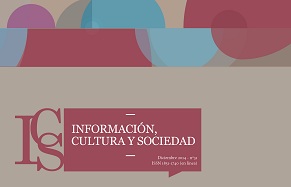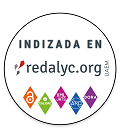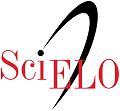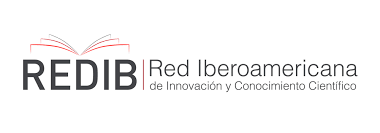El caprichoso 1500, una discusión sobre la definición de incunable
Resumen
Este artículo hace un cuestionamiento al significado típico del término incunable. Primero porque las fechas que lo definen no tiene un fundamento sólido. Segundo porque definirlo desde la temporalidad excluye una serie de elementos que son claves para el nacimiento y la fijación del libro. En 1982, el historiador norteamericano Robert Darnton, en su célebre artículo, extendió la historia del libro más allá del objeto ampliándola a los circuitos de la comunicación y a los diferentes agentes relacionados con su producción y usos, a saber: autores, editores, impresores, proveedores, vendedores, lectores y encuadernadores (1982). Esta revisión bibliográfica recupera otras aristas que también definen al incunable pero que han sido desatendidas e intenta abordar el nacimiento del libro desde los circuitos de la comunicación y no solo desde la temporalidad. Igualmente, reúne hechos, discusiones y definiciones que se conocen poco en el idioma español, y que permitirán a especialistas y divulgadores tener una mayor claridad sobre los libros del siglo XV.Descargas
Citas
Black, Robert. 2001. Humanism and education in Medieval and Renaissance Italy, Tradition and innovation in Latin schools from the twelfth to the fifteenth century. Cambridge: Cambridge University Press.
Bland, Mark. 2010. A guide to early printed books and manuscripts. West Sussex: Wiley-Blackwell.
Bliss, Douglas Percy. 2013. A history of wood engraving, The original edition. New York: Skyhorse Publishing.
Bodleian Library, ed. 2005. A catalogue of books printed in the fifteenth century now in the Bodleian Library. Oxford: Oxford University Press.
Bühler, Curt Ferdinand. 1960. The fifteenth-century book. The scribes, the printers, the decorators. Philadelphia: University of Pennsylvania Press.
Burkart, Lucas. 2019. Early book printing and venture capital in the age of debt: the case of Michel Wenssler’s Basel printing shop (1472–1491). En Graheli, Shanti, ed. Buying and selling, the business of books in early modern Europe. p. 23–54. Leiden: Brill.
Chartier, Roger. 1994. Libros, lecturas y lectores en la edad moderna. Madrid: Alianza Editorial.
Chartier, Roger. 2016. La mano del autor y el espíritu del impresor, Siglos XVI-XVIII. Buenos Aires: Katz Editores
Checa Cremades, José Luis. 1999. El libro antiguo. Madrid: Acento.
Dane, Joseph A. 2003. The myth of print culture: essays on evidence, textuality, and bibliographical method. Toronto: University of Toronto Press.
Dane, Joseph A. 2011. Out of sorts: on typography and print culture. Philadelphia: University of Pennsylvania Press.
Dane, Joseph A. 2012. What is a book?: the study of early printed books. Notre Dame, Indiana: University of Notre Dame.
Darnton, Robert. 1982. What is the history of books? En Daedalus. Vol. 111, no. 3: 65–83.
Darnton, Robert. 2014. Historia de la lectura. En Burke, Peter. Formas de hacer historia. p. 189–220. Madrid: Alianza Editorial.
Davies, Martin. 1999. Aldus Manutius, Printer and publisher of Renaissance Venice. Tempe: Arizona Center for Medieval and Renaissance Studies.
Dittmar, Jeremiah. 2019. Book prices in early modern Europe: an economic perspective. En Buying and selling, the business of books in early modern Europe. p. 72–87. Leiden: Brill.
Dondi, Cristina y Neil Harris. 2013. Oil and green ginger. The Zornale of the venetian bookseller Francesco de Madiis, 1484–1488. En Walsby, Malcolm y Natasha Constantinidou, ed. Documenting the early modern book world. p. 341–406. Leiden: Brill.
Eisenstein, Elizabeth L. 2010. La imprenta como agente de cambio. México D. F.: Fondo de Cultura Económica.
Febvre, Lucien y Henri-Jean Martin. 1962. La aparición del libro. México D. F.: Unión Tipográfica Editorial Hispano Americana. (Biblioteca de síntesis histórica. La evolución de la humanidad).
Flood, John L. 2003. ‘Volentes Sibi comparare infrascriptos libros impressos ...’, Printed books as a commercial commodity in the fifteenth century. En Hellinga, Lotte, ed. Incunabula and their readers, printing, selling and using books the fifteenth century. p. 139–51. London: The British Library.
Gaskell, Philip. 1999. Nueva introducción a la bibliografía material. Gijón: Ediciones Trea.
Geldner, Ferdinand. 1998. Manual de incunables. Madrid: Arco / Libros, S. L. (Instrumenta bibliológica).
Haebler, Konrad. 1995. Introducción al estudio de los incunables. Madrid: Ollero y Ramos.
Hellinga, Lotte. 1998. Medical incunabula. En Myers, Robin y Michael Harris, ed. Medicine, mortality and the book trade. p. 73–86. New Castle: Oak Knoll Press.
Hellinga, Lotte. 2018. Incunabula in transit: people and trade. Leiden: Brill.
International Federation and Library Associations. 2010. Early printed books as material objects. Wagner, Bettina y Marcia Reed, ed. New York: De Gruyter Saur.
Labarre, Albert. 2002. Historia del libro. México D. F.: Siglo XXI.
Martín Abad, Julián. 2010. Catálogo bibliográfico de la colección de incunables de la Biblioteca Nacional de España. Vol. I y II. Madrid: Biblioteca Nacional de España.
Mayor, Alpheus Hyatt. 1971. Prints & People: A Social history of printed pictures. New York: Metropolitan Museum of Art.
Mckitterick, David. 2003. Print, manuscript and the search for order, 1450-1830. Cambridge: Cambridge University Press.
Millares Carlo, Agustín. 1971. Introducción a la historia del libro y de las bibliotecas. México D. F.: Fondo de Cultura Económica.
National Diet Library. 2018. What are incunabula? En Incunabula - Dawn of western printing. Japan: National Diet Library. <http://www.ndl.go.jp/incunabula/e/chapter1/> [Consulta: 30 abril 2023].
Neddermeyer, Uwe. 1997. Why were there no riots of the scribes? First results of a quantitative analysis of the book-production in the century of Gutenberg. En Gazette du livre medieval. No. 31: 1–8.
Needham, Paul. 1996. Fragments in books: Dutch prototypography in the Van Ess Library. En So precious a foundation: the Library of Leander Van Ess at the Burke Library of Union Theological Seminary in the City of New York. New York: The Grolier Club. p. 85–110.
Needham, Paul. 2009. Prints in the early printing shops. En The woodcut in fifteenth-century Europe. Washington D. C: National Gallery of Art; Center for Advanced Study in the Visual Arts. p. 39–91.
Pettegree, Andrew. 2010. The book in the Renaissance. New Haven: Yale University Press.
Pettegree, Andrew y Shanti Graheli. 2019. How to lose money in the business of books: commercial strategies in the first age of print. En Graheli, Shanti, ed. Buying and selling, the business of books in early modern Europe. Leiden: Brill. p. 1–20.
Pollard, Alfred William. 1891. Last words on the history of the title-page, with notes on some colophons and twenty-seven fac-similes of title-pages. London: J.C. Nimmo.
Pollard, Alfred William. 1893. Early illustrated books; a history of the decoration and illustration of books in the 15th and 16th centuries. London: K. Paul, Trench, Trübner & Co., Ltd.
Pollard, Alfred William. 1905. An essay on colophon, with specimens and translations. Chicago: The Caxton Club.
Restrepo Zapata, Jaime. 2014. La invención de la imprenta y los libros incunables. Bogotá: Universidad del Rosario. (Cuadernos para la historia).
Saenger, Paul. 2004. La lectura en los últimos siglos de la Edad Media. En Cavallo, Guglielmo y Roger Chartier, eds. Historia de la lectura en el mundo occidental. Madrid: Taurus. p. 211–260.
Smith, Margaret M. 2000. The title-page its early development 1460-1510. London; New Castle: The British Library; Oak Knoll Press.
Sordet, Yann. 2009. Le baptême inconscient de l’incunable : non pas 1640 mais 1569 au plus tard. En Gutenberg Jahrbuch. Vol. 84, 102–105.
Steinberg, Sigfrid H. 1996. Five hundred years of printing. New Castle: The British Library; Oak Knoll Press.
White, Eric. 2017. Editio princeps: A history of the Gutenberg Bible. London; Turnhout: Brepols.
Witcombe, Christopher L. C. E. 2004. Copyright in the Renaissance: Prints and the privilegio in sixteenth-century Venice and Rome. Leiden: Brill.
Derechos de autor 2023 Información, cultura y sociedad

Esta obra está bajo licencia internacional Creative Commons Reconocimiento-CompartirIgual 4.0. Los autores/as que publiquen en esta revista aceptan las siguientes condiciones:
- Los autores/as conservan los derechos de autor y ceden a la revista el derecho de la primera publicación, con el trabajo registrado con la Licencia Creative Commons Atribución-CompartirIgual 4.0 Internacional, que permite a terceros utilizar lo publicado siempre que mencionen la autoría del trabajo y a la primera publicación en esta revista.
- Los autores/as pueden realizar otros acuerdos contractuales independientes y adicionales para la distribución no exclusiva de la versión del artículo publicado en esta revista (p. ej., incluirlo en un repositorio institucional o publicarlo en un libro) siempre que indiquen claramente que el trabajo se publicó por primera vez en esta revista.
- Se permite y recomienda a los autores/as a publicar su trabajo en Internet (por ejemplo en páginas institucionales o personales).























